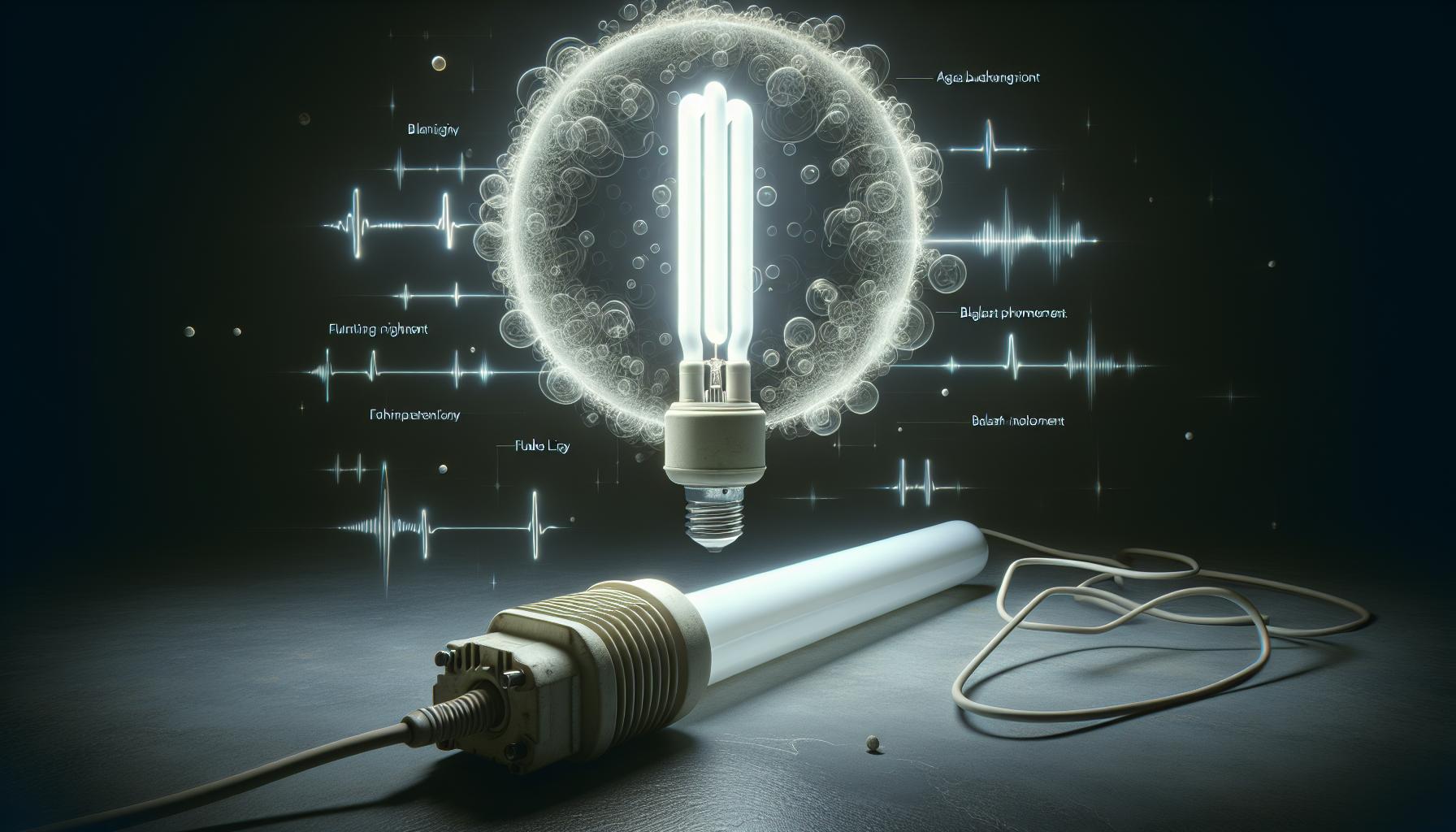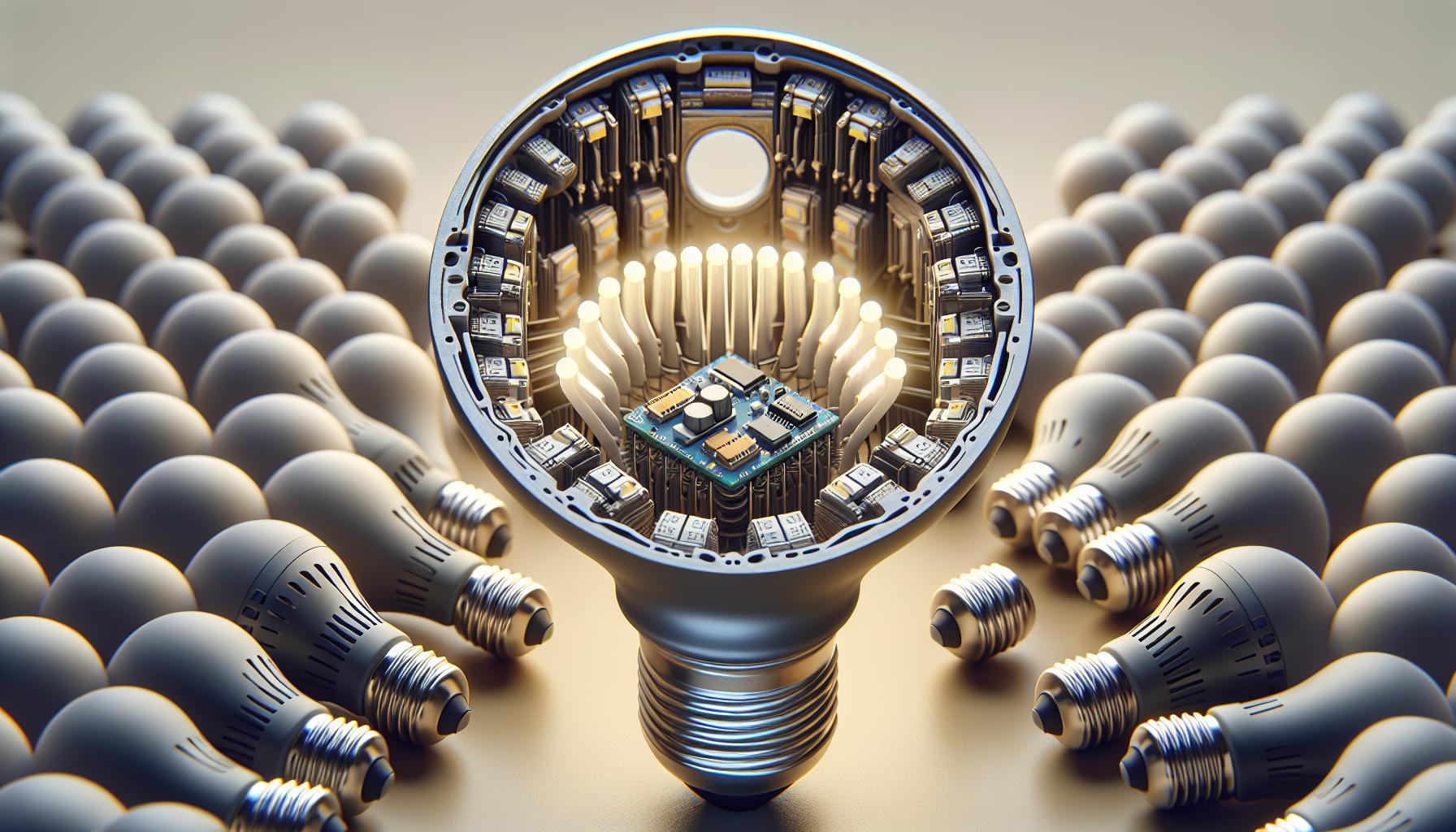Ever flipped a switch and heard a faint buzz? It’s not just your imagination—light bulbs can indeed make sounds. While you’re basking in that warm glow, there’s a whole symphony playing that you might not even notice.
From the gentle hum of an old incandescent to the subtle crackle of a fluorescent tube, the sounds are there. But what’s behind this audio output? Stay tuned as we shed light on the acoustic side of illumination.
The Science Behind Light Bulb Sounds
Imagine flipping the switch in your cozy living room, and as your lights brighten, a soft buzz fills the air. You’ve probably noticed this phenomenon and wondered why it happens. Well, light bulb acoustics aren’t just random noises; there’s science at play.
In incandescent bulbs, the sound you hear is often linked to the filament. This delicate coil of wire heats up to produce light, but it also expands and vibrates, creating a humming sound. These vibrations are usually subdued; however, when a bulb is on its last legs or if the voltage fluctuates, you might hear a more noticeable hum.
Moving on to fluorescent bulbs, the situation gets a bit more complex. Fluorescents work by exciting mercury vapor, which emits ultraviolet light when it decays to a lower energy state. This UV light is then converted into visible light by the phosphor coating inside the bulb. The parts responsible for this process include electrodes and a ballast. And it’s the ballast that usually leads to the symphony of sounds you hear. An aging or malfunctioning ballast can produce a range of sounds from a gentle buzz to a distracting crackle.
- Filament Vibrations: Expansion and contraction in incandescents cause a hum.
- Ballasts in Fluorescents: Aging can lead to a mix of buzzing and crackling sounds.
If you’re working on your latest DIY project and hear these sounds, check the fixtures and connections. Loose components can resonate with the electrical current, amplifying the bulb’s serenade. Additionally, the type of fixture you’re using can influence acoustics. Enclosed fixtures and acoustically live spaces (like your bathroom) can turn a whisper into a chatter.
LEDs represent the new age in lighting and are known for being virtually silent. Solid-state technology means no filaments to vibrate or ballasts to hum. That said, poorly designed drivers can sometimes cause dimmable LEDs to emit a faint buzz, especially if they’re not compatible with your dimmer switch.
Remember, your lighting is not just about lumens and aesthetics; it’s a symphony, and every bulb has its own note. Whether it’s a gentle hum or a soft whisper, next time you switch on a light, take a moment to listen to the music of illumination.
Understanding Incandescent Bulb Sounds
Ever found yourself wondering about that gentle hum emanating from your lamp when you flick it on? It’s not your imagination—incandescent bulbs really do sing, in their own quaint way. Let’s delve into the science of why.
At the heart of an incandescent bulb, you’ll find the filament, which is the glowing wire you see inside the glass bulb. When electricity flows through this filament, it heats up to an incredible temperature, causing it to glow bright and shed light. But that’s not all that’s going on. The heat doesn’t just cause light to radiate out; it also expands and contracts the filament wire.
You’re likely familiar with materials expanding in heat and contracting when cool—well, the filament behaves just the same. Imagine you’re working on a DIY project, and you’re bending a metal wire back and forth. It’s going to get warm, and if it were tiny and heated by an electrical current, it would probably make a noise too, right? The sound the filament makes is a side-effect of its intense dance with heat.
While the principle behind it’s similar to a guitar string vibrating to produce a sound, the filament isn’t music to everyone’s ears. It’s not particularly melodious, but in the quiet of the night, the hum tells you your bulb’s working hard to light up your space.
Sometimes, this sound is amplified by the fixture the bulb is housed in. If the bulb is in a loose socket or an echoey lampshade, the sound can reverberate, making it more noticeable. It’s kind of like how your voice echoes in an empty room or a grand cathedral—same principle.
« Is Filament Light Bulbs Outdated? Pros, Cons, and Smart Alternatives
Why Is Light Bulb Dim? Discover Causes and Bright Solutions »
Considering your home DIY savvy, you might wonder if anything can be done about this. After all, shouldn’t you be the maestro of your house’s symphony? Tightening up loose parts in the fixture can often minimize the sound, creating a quieter ambiance. It gives ‘setting the mood’ a whole new angle when considering the soundscape besides the light.
Remember, the hum of an incandescent bulb is normal and usually not a sign of a problem. However, if the bulb starts to make more unusual noises, it might be worth inspecting more closely—perhaps a sign that your light symphony needs a new conductor.
Exploring Fluorescent Tube Sounds
Have you ever flipped on a fluorescent light and been greeted with a buzz or hum? Don’t fret; fluorescent tubes are notorious for this. Ever wondered why? It’s usually due to the ballast, an electrical component designed to regulate the power supply to the bulbs. When a ballast becomes old or faulty, it can create a vibrating sound due to electrical chattering.
Here’s what might be happening inside your fluorescent fixture:
- Electrical current passes through the gas-filled tube, causing the gas to emit light. This flow can induce a 60-cycle hum that’s inherent to the alternating current.
- The light-stabilizing ballast may produce a low buzzing sound, generally at a frequency of 60 Hz, when it’s in operation.
- Over time, the lampholder can become worn, and the electrical contacts might not be as firm, causing sound from arcs or resistance.
If your fluorescent light is singing the blues, it might be time to troubleshoot. Check on the tightness of the bulb in its sockets. Sometimes just reseating the tube can quiet things down. Also, inspect the ballast—does it show signs of damage or wear? If so, it might be time for a replacement.
Remember, safety first—always turn off the power at the circuit breaker before doing any inspection or DIY.
Energy-efficient variants, such as LED tubes, are designed to sidestep these acoustic quirks. So, if you’re looking to make a switch and upgrade your home project list, consider this as a silent and cost-saving alternative.
While it’s true that some amount of noise from fluorescent lights is to be expected, too much of it could be a sign that maintenance is due. Listen closely, and you’ll start recognizing the normal operational sounds compared to the red flags that warrant attention. A well-maintained fixture not only runs quietly but also extends the life of your bulbs.
LED Bulbs: Silent But Not Soundproof
LED bulbs are a true marvel when it comes to their sound profile. Unlike their fluorescent counterparts, LEDs don’t have a ballast that can create a buzzing or humming noise. This is largely due to their solid-state technology, which also contributes to their energy efficiency and long life span. As you’re already aware, the absence of moving parts or heated filaments in LED bulbs results in a near-silent operation, making them a favorite in spaces where noise is a concern.
But before you get the impression that LEDs are completely free of acoustic issues, it’s important to note that they are silent but not entirely soundproof. Occasionally, you might encounter an LED bulb emitting a faint sound, which can usually be traced back to the driver component. The driver, an electronic device within the LED, ensures that the correct electrical current is supplied to the light-emitting diodes.
Sometimes, when you have dimmable LED lights, you may notice a slight buzz. This typically occurs due to compatibility issues between the dimmer switch and the LED bulbs. To sidestep this problem:
- Use a dimmer switch that’s specifically designed for LEDs
- Make sure the dimmer and the bulbs are matched in terms of power requirements
Noise may also stem from the electrical installation itself. Poor wiring or loose connections can lead to a myriad of issues, including audible interference in your LEDs. Hence, it’s not always the bulb that’s at fault. To ensure your lighting system is up to par, consider these steps:
- Double-check the wiring in your fixtures
- Secure any loose connections
- Consult with a professional electrician if you’re unsure
Embracing LEDs in your home lighting projects is a smart move, not just for their silence but also for their environmental and economic benefits. They’ve redefined what it means to have efficient and comfortable lighting, changing the game for homeowners and DIY enthusiasts alike.
Conclusion
You’ve seen that while light bulbs can indeed make sounds, there’s usually a fix for that pesky hum or buzz. Whether it’s tightening the bulb, inspecting the ballast, or switching to LED tubes, you’ve got options to keep your home quiet and well-lit. Remember, if you’re using LEDs and hear a buzz, check your dimmer switch compatibility and wiring. Embracing LED technology not only cuts down on noise but also benefits your wallet and the planet. So next time you flick a switch and hear a sound, know that with a little troubleshooting, you can enjoy the sound of silence.
Frequently Asked Questions
What causes the buzzing sound in fluorescent tubes?
The buzzing or humming sound in fluorescent tubes commonly stems from the ballast, which is a component that regulates the power to the bulb. Other causes may include worn lampholders and loose electrical contacts.
Can LED bulbs make noise?
Yes, LED bulbs can occasionally emit a faint sound, usually due to the driver component or compatibility issues with dimmer switches not designed for LEDs.
How can I troubleshoot a noisy fluorescent light?
To troubleshoot a noisy fluorescent light, check the tightness of the bulb and inspect the ballast for any signs of damage.
What should I look for if my LED bulb is making a noise?
If an LED bulb is making noise, check for compatibility between the bulb and your dimmer switch, and make sure they match in power requirements. Also, inspect your wiring and secure any loose connections.
Are LED bulbs a better alternative to fluorescent tubes?
LED bulbs are generally considered a better alternative to fluorescent tubes due to their energy efficiency and they typically do not have the same acoustic quirks as fluorescent lighting.
Can I use any dimmer switch with my LED bulbs?
It is best to use dimmer switches specifically designed for LED bulbs to avoid compatibility issues which can lead to noise and suboptimal performance.
What environmental and economic benefits do LED bulbs offer?
LED bulbs are more energy-efficient, have a longer lifespan, and contribute to reducing carbon emissions, offering both environmental and economic benefits compared to traditional lighting options.




